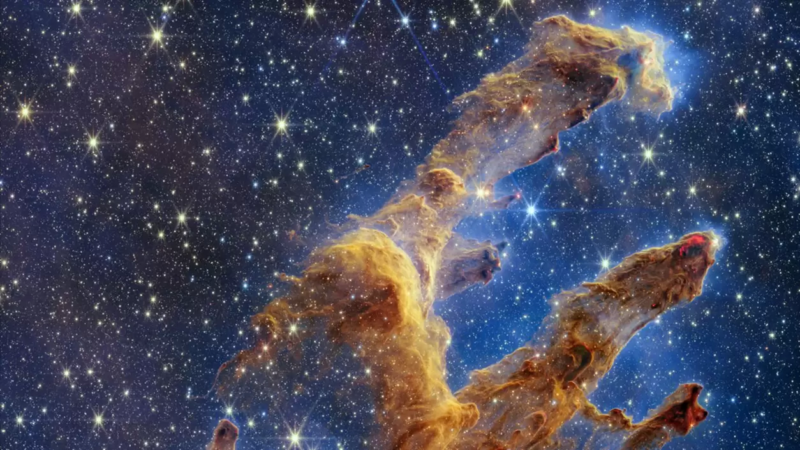First captured by the Hubble Telescope in 1995 and again in 2014, the Pillars of Creation has become one of the most mesmerizing deep space phenomena of all time.

Credits: NASA, ESA, CSA, STScI; Joseph DePasquale (STScI), Anton M. Koekemoer (STScI), Alyssa Pagan (STScI).
Now, the James Webb Space Telescope (JWST) has fixed its gaze on the towering tendrils of cosmic dust and gas sit at the heart of M16, also known as the Eagle Nebula.
The level of detail the Webb telescope has picked up through its formidable infrared sensors is nothing short of astonishing. It is no wonder it is one of the most highly anticipated JWST images of the year.
“Webb’s new view of the Pillars of Creation will help researchers revamp their models of star formation by identifying far more precise star populations, along with the quantities of gas and dust in the region,” NASA said in a statement. “Over time, they will begin to build a clearer understanding of how stars form and burst out of these dusty clouds over millions of years.”
What is being shown to human eyes through the processed image is the formation of stars in real-time. The 3-D pillars look like majestic rock formations, but are actually a vast collection of interstellar dust and gases that are slowly being condensed together by gravity, paving the way for the creation of new stars.
“When knots with sufficient mass form within the pillars of gas and dust, they begin to collapse under their own gravity, slowly heat up, and eventually form new stars,” NASA added.
Stretching roughly 4 to 5 light-years, the Pillars of Creation are a fascinating but relatively small feature of the entire Eagle Nebula, which spans 70 by 55 light-years. The nebula, discovered in 1745 by the Swiss astronomer Jean-Philippe Loys de Chéseaux, is located 7,000 light-years from Earth in the constellation Serpens.
With an apparent magnitude of 6, the Eagle Nebula can be spotted through a small telescope and is best viewed during July. A large telescope and optimal viewing conditions are necessary to resolve the Pillars of Creation.











